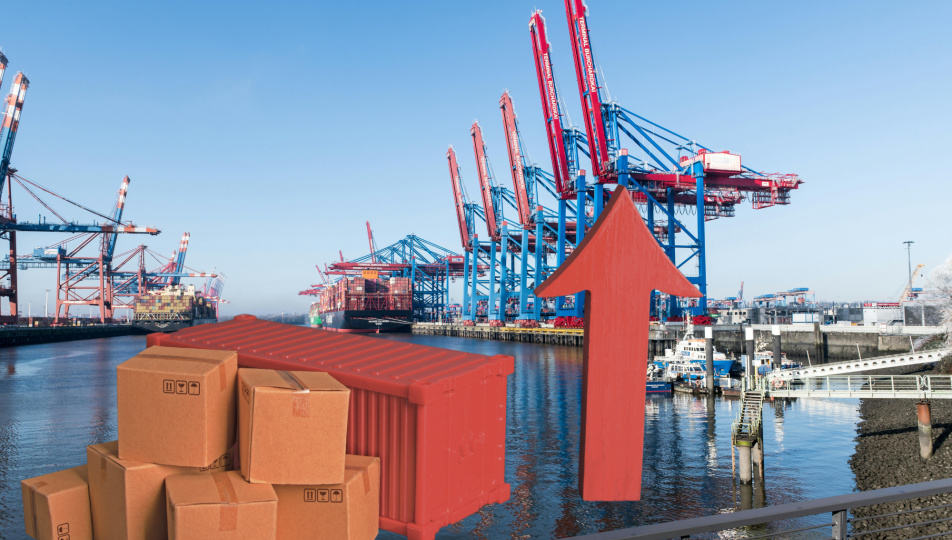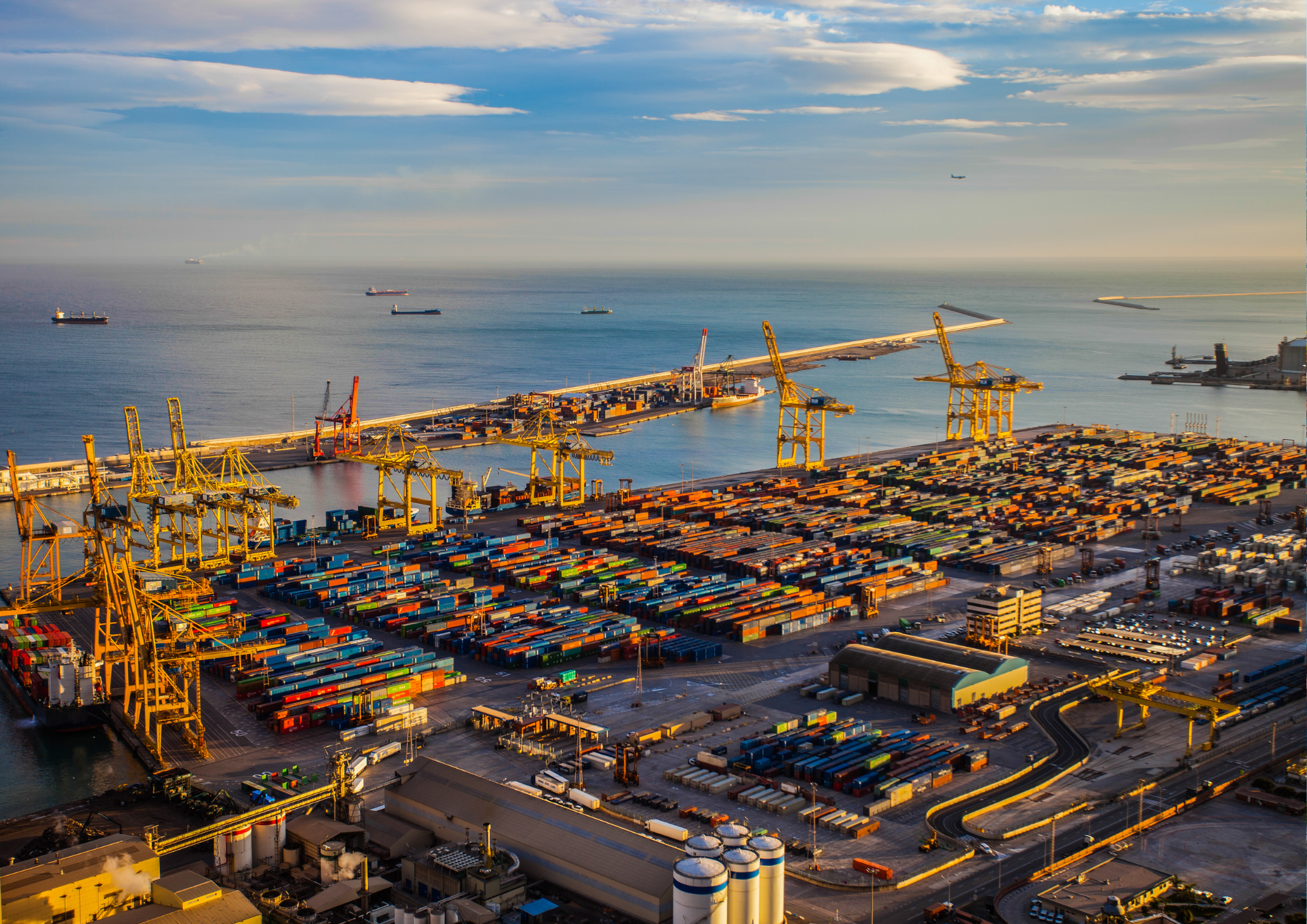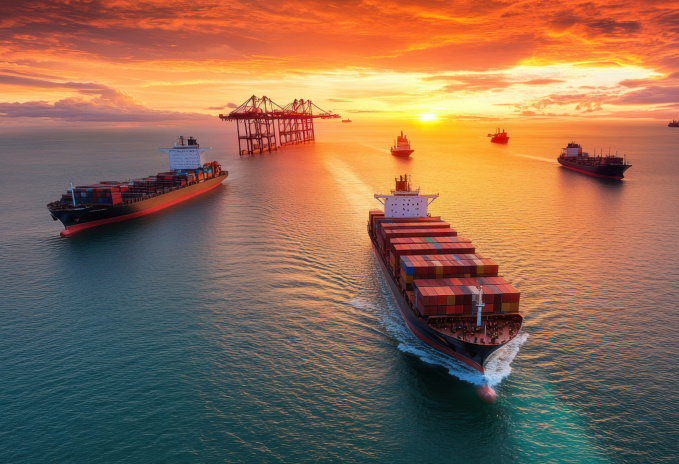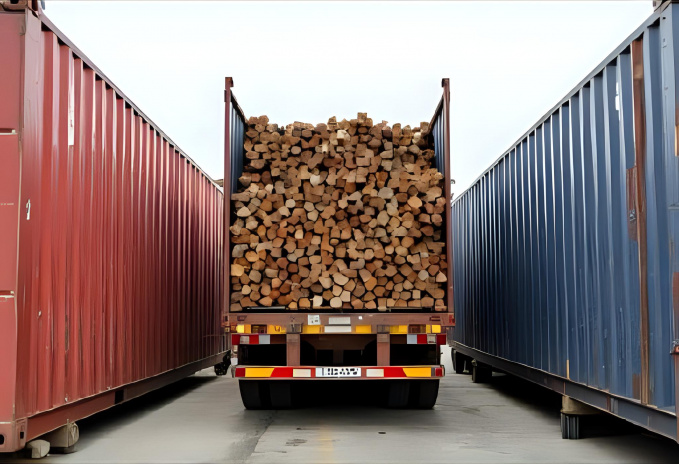Actual situation in ports: causes and consequences

In recent newsletters, we have informed you about the increasing congestion in European ports, which does not allow containers to be received on time. The unfortunate consequence is not only the delay of goods that have to wait at ports for removal, but also the increasing costs that are being charged to the goods. Whether it is storage at the port or container delays.
What are the causes in particular:
INCREASING GOODS VOLUME AND BOAT SIZE
Even though there are times when you hear that goods are scarce and shipowners have relatively empty ships, the overall volume of goods is continuously increasing. The capacity and size of the ships are also increasing.
Ports are thus faced with the demands of ever-increasing volume while maintaining the same throughput. However, this is complicated on the one hand by the size of the ships, which take 3-4 days to unload instead of 1-2 days. In our author's article (here) we described how this has complicated the work for planning of off-take.
Previously, it was possible to plan the train composition just with a view to unloading the ship practically to the day. Now, planning is made more difficult precisely because it is not known when a particular container will be unloaded from the ship, and the 3-4 day variance is already complicated for scheduling a train that departs 1-2 days apart.
Our added value as a freight forwarder used to be that we secured space on the train in a timely manner. Of course, that takes time, but we lose space on the train when we unload late and are kind of at the front or back of the queue.
THE UNREliability of the “Timetables”
Recently the reliability of boat arrivals has been slightly increasing, yet the reliability is not yet good enough to disregard this aspect. This adds another piece of uncertainty that complicates the planning of follow-up. In very simplistic terms, if one ship arrives on Monday and the other on Thursday, they will both unload during that week. If one is late and arrives on Wednesday, both ships will no longer unload and there is a backlog of containers.
INFRASTRUCTURE REPAIRS
Infrastructure is being prepared for further increases and ports and connections to inland container hubs are being upgraded. However, this now brings with it additional obstacles in the form of planned closures. The biggest ones are still to come this summer. Operators are then forced to find detour routes, but these often do not take up the full capacity and the port and terminals are filling up again.
FURTHER ASPECTS AND OUTLOOK
The previous mix is then compounded by the low water levels on the Rhine, for example, and the barges, which are used to a much greater extent in Western Europe than here to deliver containers to the terminal depot, cannot take the required amount of containers from the port.
We are also witnessing a domino effect, with shipowners diverting ships elsewhere and skipping the affected port due to the long waiting times outside the port of Rotterdam. However, thanks to this, the situation is shifting to other places such as Hamburg. There, the ship arrives unexpectedly (refilling) or at another time (skipping the previous port), bringing with it containers that belonged elsewhere. And the port, the shippers, the customers, the operators and the forwarders then have to work out how to get the container back to where it was destined.
The domino effect is starting to work on the whole chain and some Chinese (Shanghai) and US ports (LA, NY) are starting to report congestion.
.jpg)
And the view?
Until the end of August. It is necessary to prepare that the situation, according to all available information, will last at least through the summer.
Seasonal Christmas goods will soon start arriving from Asia.
Planned closures and rail closures will continue. In addition to the short-term closures mentioned in the previous newsletter, the most significant one will be coming from 1 August 2025. The 200 km section between Hamburg and Berlin will undergo extensive construction work. It is scheduled to end on 30 April 2026. In the earlier article below it is mentioned that talks about solutions regarding freight traffic were due to start in January, but no concrete solutions and 100% capacity replacement can be discussed.
https://cs.railmarket.com/news/infrastructure/28885-hamburg-berlin-railway-route-to-undergo-general-renovation-diversion-concept-raises-questions
The aforementioned changes in port calls and ship rotations, whether they are an immediate response or planned when a particular ship departs from a loading point, do not bring stability to the supply chain.
The summer months are a holiday time, the speed of work in and out of ports can be affected.
While the Israeli-Iranian conflict has not yet had major consequences beyond the circumnavigation of the Arabian Sea at even greater distances, a return to Suez or stability is also not on the agenda. Nor is US trade policy on tariffs, specifically the erratic nature of it and the sudden dips and surges in the flow of goods that go with it.
However, let's hope for some reassurance by the end of the summer, thanks to the prediction of calming demand.

A WAY OUT AND A SOLUTION?
We don't have a recipe and as long as the above conditions persist along with seasonality, congestion at one particular service or port, the situation will continue to repeat itself in cycles.
Apart from general developments where it will help especially:
- The end of rail repairs
- More accurate schedules and ship reliability
- Precise scheduling of ship unloading with respect to the location of a particular container and specifying its unloading window
- Stabilization of the geopolitical situation
We try to make it as easy and helpful as possible for you:
a) By promptly passing on up-to-date information regarding your goods
b) Increased intensity of work with train operators, planning and flexible container movements within the current train load
c) Seeking alternatives in the form of other operators
d) Finding and offering alternative services, ports
e) Offering and securing direct tractors, which, while adding to the cost of direct transport from the port, result in savings in terms of storage and container dwell time
f) Predictive ETA of containers in eSTONE based on AI validation of data from multiple sources, which gives us and you a more accurate indication of port arrivals and helps you plan better
g) We are working on visualizing port waiting trends based on live data


